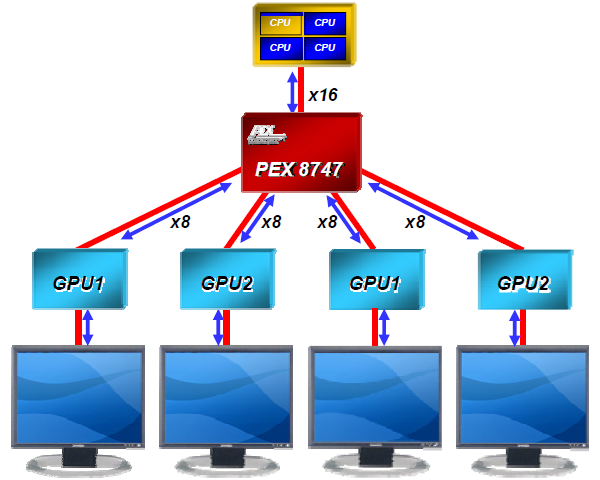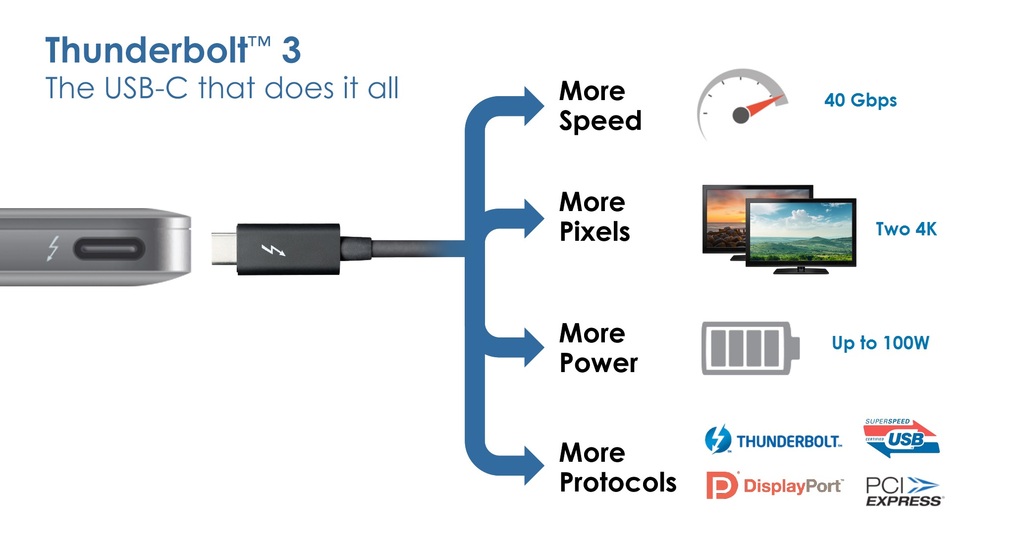Early Verdict
Packing high-end features, such as a 3-way SLI enabling 48-lane repeater switch, Thunderbolt 3 controller, integrated liquid cooling support, a USB 3.1 front-panel adapter, dual Gigabit Ethernet and a MIMO wifi controller, Gigabyte's Z10X-Gaming G1 needs those features to justify its high price. Supreme four-DIMM memory overclocking stability has put this board in our own test arsenal, and those added features should give it the flexibility to make additional appearances in other articles. While far from value-priced, Gigabyte's Z170X-Gaming G1 sports a far more extensive feature set for the money than its lower-cost rivals, earning it our Editors' Choice award.
Pros
- +
4-way CrossFireX/SLI
- +
802.11ac MIMO
- +
Cabling
- +
Selectable firmware ROMs
- +
Overclocking
- +
Thunderbolt 3
- +
Three Killer Networks controllers
- +
USB 3.1 front-panel bay device
Cons
- -
Price
Why you can trust Tom's Hardware
Introduction
The problem with being on the cutting edge of Intel's CPU technology is that the latest CPU cores are always reserved for its mainstream CPU interfaces. It takes another half-generation for high-end models to get replaced, and the replacement is often a full generation behind mainstream counterparts. The notion that Intel can spend a product cycle or two perfecting its cores before unleashing them on the server market makes sense from a business standpoint, but it typically leaves enthusiasts to choose between faster mainstream technologies or higher-core-count server-based parts.
Since most games make little use of a fifth core (let alone a seventh or eighth), it makes sense to pick a quad-core CPU with the best per-core performance and highest possible clock. Both of those features are exclusive to the top CPUs of Intel's "mainstream" class, which today is represented by the Core i7-6700K. On the other hand, Intel's "professional" platforms provide the best connectivity for multiple graphics cards. Since mainstream users don't need more than a single PCIe 3.0 x16 slot, Intel equips its mainstream platforms that way. And since users who would pair the fastest-possible quad-core processor with three or four of the fastest-possible graphics cards are only a tiny fraction of the overall market, Intel virtually ignores these builders.
The workaround for connecting multiple graphics cards to the Core i7-6700K and other Skylake-based desktop processors is to use a repeating switch, as already discussed in our EVGA Z170 Classified review. Labeled "Multicast" by the switch's manufacturer, this part takes advantage of CrossFire and SLI's need to send identical data to every card by repeating sixteen controller lanes to two sets of sixteen device lanes. Too expensive for mid-budget performance enthusiasts, this part is usually bundled with other high-end features to create a premium package. Though high-end in every respect, EVGA had a tough time filling-out its Z170 Classified with a broad-enough features set to match our expectations for the $400+ premium market.
Unlike its above-mentioned competitor, Gigabyte's Z170X-Gaming G1 has no trouble presenting enough features to qualify it as a "premium class" product by nearly any definition. Advancements begin with Intel's DSL6540 Thunderbolt 3 controller, which replaces the ASM1142 USB 3.1 controller found on the Z170 Classified while simultaneously adding a myriad of connection possibilities.
Gigabyte also added an 802.11ac MIMO Wi-Fi controller with up to 867mbps bandwidth, while retaining dual Gigabit Ethernet capability. The company also didn't drop the ASM1142 from its controller set, instead it was moved to a PCIe-based (via SATA-E) front-panel device.
We even see a pair of G1/4 fittings to connect the Z170X-Gaming G1's 22-phase voltage regulator to an open-loop liquid cooler.
MORE: Best MotherboardsMORE:
How To Choose A MotherboardMORE: All Motherboard Content
Get Tom's Hardware's best news and in-depth reviews, straight to your inbox.
-
Crashman Reply
Lesson to manufacturers, give me more to write about and I'll write a bigger article?17171729 said:That was a great article, thanks.
-
red77star 6 Core i5820 is cheaper than quad core top of the line Skylake. The thing is that LGA 2011 V3 is going to support future CPU where this board is pretty much stack at Skylake.Reply -
Rookie_MIB Why is nobody actually testing the best features of the board? Quad SLI? Raid M.2? This is a top of the line board and not a single result of the biggest questions.Reply -
James Mason Reply17172008 said:6 Core i5820 is cheaper than quad core top of the line Skylake. The thing is that LGA 2011 V3 is going to support future CPU where this board is pretty much stack at Skylake.
Proof?
Also the top of the line skylake i7-6700k is currently being price gouged a bit. You can get it at microcenter for only 359. The i7-5820k is quite a lot more power hungry than the skylake. -
Math Geek this is the 3rd article i have read on this mobo from 3 different sites and yet no one has bothered to see what the 3 m.2 slots can do in raid set-up. that was the first thing that stood out to me when i saw the board and no one has even tested it yet.Reply
in my opinion if you are going to review a top of the line "cost-be-damned overclocked Core i7-6700K gaming rig", the fill that sucker up with what it can handle and let's see what it can do. try out some m.2 raid and at least 3 way sli. someone paying this kind of money for a mobo is gonna go all out and i'd love for the review to go all out as well :)
otherwise the rest of the info is nice and complete as usual. just need the last couple chapters and it would have been perfect -
rolli59 Very nice board that appeals to the <1% market since most people do not use the added expensive features.Reply -
Crashman Reply
None of us has three or more matching cards to put at one lab. But I'm thinking about doing another PCIe Scaling in SLI article like I did a few years ago with the P67.17172176 said:Why is nobody actually testing the best features of the board? Quad SLI? Raid M.2? This is a top of the line board and not a single result of the biggest questions.
What do you think? I might be able to get someone to pitch in some cards for that :)
The entire PCH has only the bandwidth of a single M.2 slot, and that's also shared with the Thunderbolt 3 controller. As the article state it's pointless to try to load up more than 32GB/s in devices at the same time.17173073 said:this is the 3rd article i have read on this mobo from 3 different sites and yet no one has bothered to see what the 3 m.2 slots can do in raid set-up. that was the first thing that stood out to me when i saw the board and no one has even tested it yet.
in my opinion if you are going to review a top of the line "cost-be-damned overclocked Core i7-6700K gaming rig", the fill that sucker up with what it can handle and let's see what it can do. try out some m.2 raid and at least 3 way sli. someone paying this kind of money for a mobo is gonna go all out and i'd love for the review to go all out as well :)
otherwise the rest of the info is nice and complete as usual. just need the last couple chapters and it would have been perfect




